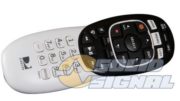Way back, many years ago, when DIRECTV first introduced its wireless client box, there were people who called them out for it being “wireless.” After all, you still had to connect it to the TV and to power in the wall. Would it be possible to make a client that had no wires at all? Here are three ways it could actually work.
1. A box that casts
Many smart TVs today have the ability to receive “casts” from PCs or other devices. This is a clean, wireless connection which puts video on the TV from a device that’s not physically connected. (For those TVs without this capability, a Chromecast lets you do the same thing.) A true wireless client could have this capability built in. It would add about a second of latency to the whole thing, at most. But then of course you’d need power. You could build a rechargeable battery into the thing. We know the current wireless clients use 22 watts continuously. A phone, by comparison, has a battery that holds 5.45 watthours of power according to my research. You’d need a battery that could store at least 100 watthours to have the client last all day, possibly more depending on the definition of “all day.” And then it would have to charge. But, it could work. No question it could work.
2. A box that’s connected
Technically, replacing the wireless client with a dongle would mean that there were no wires. All right, there would probably have to be one wire. HDMI cables don’t carry current, much to the chagrin of dongle makers everywhere. So, the dongle would have to plug into a USB power source on the TV. This isn’t a big deal as streaming sticks do this all the time.
This might be the best option for a truly hidden client install, and I have to imagine that it’s technically possible. Such a dongle might suffer from reduced range or bad reception though, and that’s something that would have to be addressed. Unlike streaming, satellite TV doesn’t let you switch to a lower-quality stream if the network is congested.
3. A box that’s built in
Back in 2011, DIRECTV started building its client software right into select Samsung, Sony, and LG televisions. It was just another input or another app on the smart TV. DISH did much the same thing a few years later. It was like a box that… wasn’t even there.
The problem with that is the same problem that all smart TVs seem to face sooner or later. Eventually, the apps break down or become unsupported as the TV ages. DIRECTV’s built-in solution had some issues even when it was new, too. You needed to run coaxial cable to the TV but confusingly you didn’t connect it to the TV. You connected it to a separate box, with its own power supply, which then connected via Ethernet to the TV. It wasn’t perfect.
Today’s technology could see that brought back, though. The smart money is on DIRECTV and DISH coming out with streaming apps for their satellite services. This is what cable providers do now, rather than offering purpose-built boxes, and customers love it. It would take a little work to make it happen, but it’s not impossible.
Would you choose any or all of these solutions?
I’m curious to find out which of these solutions are appealing to you. Leave a comment below and let’s get the conversation started! And of course, when you are ready to upgrade your DIRECTV equipment, shop at Solid Signal for the same parts the installers use.




